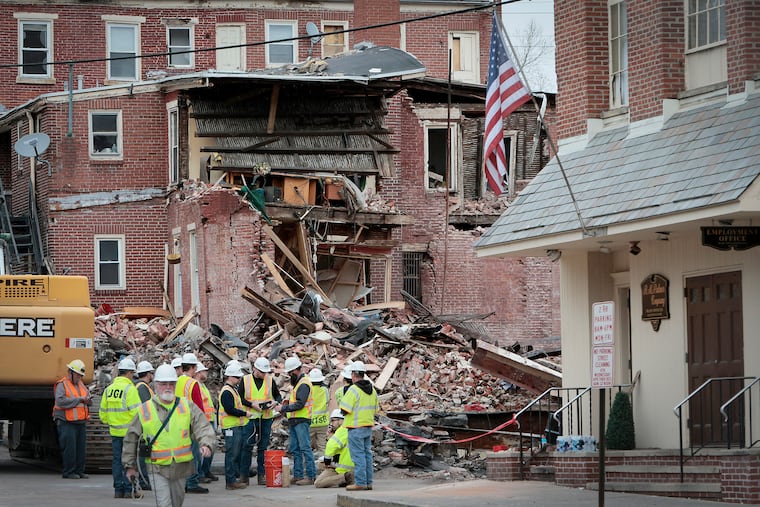Two gas leaks identified in deadly West Reading chocolate factory explosion
One of the pipe fittings used materials with “poor performance histories relative to brittle-like cracking,” investigators said.

Federal investigators have identified two leaks connected to a fatal natural gas explosion at a West Reading chocolate factory in March.
The explosion at the R.M. Palmer Co. factory killed seven people, injured 11 more, and displaced three families, rocking the tight-knit borough of about 4,500 people.
» READ MORE: West Reading chocolate factory victims died of blast injuries, thermal burns, coroner says
The National Transportation Safety Board said its investigation is ongoing and it could take as long as two years to determine a probable cause of the explosion. Still, in an update on the investigation Tuesday, the agency said the gas leaks came from two service tees, fittings that help connect pipes, installed in 1982 and 2021. Investigators found the 1982 fitting was fractured between two of Palmer’s buildings less than two feet from a steam line, condensate line, and several heated chocolate pipelines. The fitting used materials with a history of cracking, the report said.
As part of a 2021 project at Palmer, a gas meter was moved from the basement of one of the buildings to its exterior. A new service line and service tee were installed as part of the move, and investigators said the 1982 tee was retired as part of that project, but remained connected to the natural gas system.
Investigators found the type of service tee and insert used in the 1982 fitting had been added to a list of materials with “poor performance histories relative to brittle-like cracking” by the Pipeline and Hazardous Materials Safety Administration in 2007.
UGI Corp., which serviced the Palmer buildings, declined to say how much the company still uses the materials in question.
“As the investigation is ongoing, we are unable to comment further,” the company said in a statement. “Our focus and commitment remains with the victims and the West Reading community.”
On March 24, the day of the explosion, 35 office staff and 70 production employees were working in two R.M. Palmer buildings that shared a block with an apartment building. Employees from both buildings described smelling gas or rotten eggs ahead of the blast.
UGI had reported that there had been no known work in the area, nor a pressure spike in gas use ahead of the explosion.